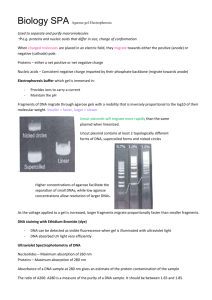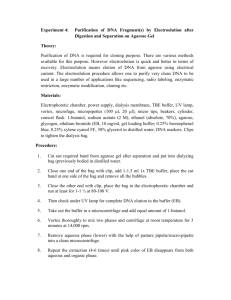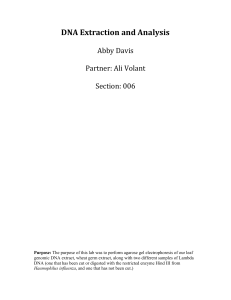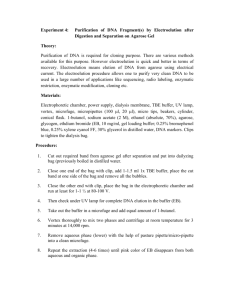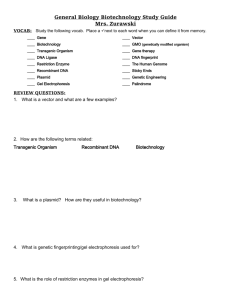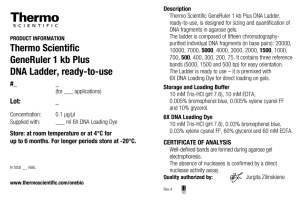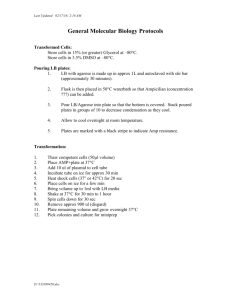Lab 3: First restriction digest and agarose gels (phage lambda)
advertisement
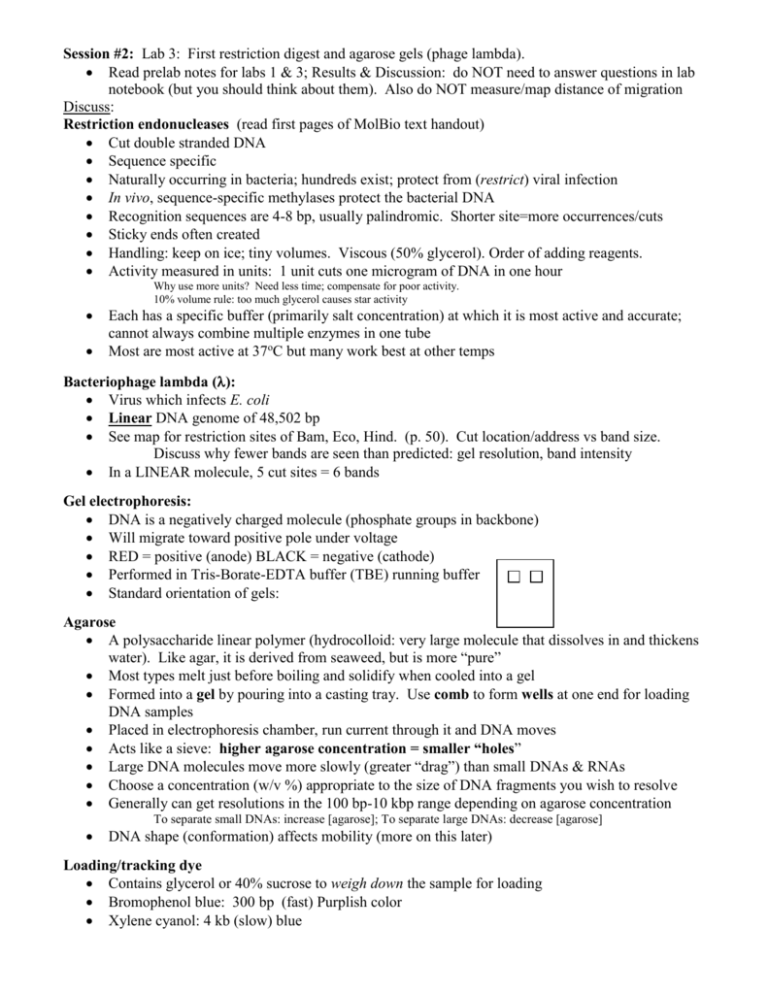
Session #2: Lab 3: First restriction digest and agarose gels (phage lambda). Read prelab notes for labs 1 & 3; Results & Discussion: do NOT need to answer questions in lab notebook (but you should think about them). Also do NOT measure/map distance of migration Discuss: Restriction endonucleases (read first pages of MolBio text handout) Cut double stranded DNA Sequence specific Naturally occurring in bacteria; hundreds exist; protect from (restrict) viral infection In vivo, sequence-specific methylases protect the bacterial DNA Recognition sequences are 4-8 bp, usually palindromic. Shorter site=more occurrences/cuts Sticky ends often created Handling: keep on ice; tiny volumes. Viscous (50% glycerol). Order of adding reagents. Activity measured in units: 1 unit cuts one microgram of DNA in one hour Why use more units? Need less time; compensate for poor activity. 10% volume rule: too much glycerol causes star activity Each has a specific buffer (primarily salt concentration) at which it is most active and accurate; cannot always combine multiple enzymes in one tube Most are most active at 37oC but many work best at other temps Bacteriophage lambda (): Virus which infects E. coli Linear DNA genome of 48,502 bp See map for restriction sites of Bam, Eco, Hind. (p. 50). Cut location/address vs band size. Discuss why fewer bands are seen than predicted: gel resolution, band intensity In a LINEAR molecule, 5 cut sites = 6 bands Gel electrophoresis: DNA is a negatively charged molecule (phosphate groups in backbone) Will migrate toward positive pole under voltage RED = positive (anode) BLACK = negative (cathode) Performed in Tris-Borate-EDTA buffer (TBE) running buffer Standard orientation of gels: Agarose A polysaccharide linear polymer (hydrocolloid: very large molecule that dissolves in and thickens water). Like agar, it is derived from seaweed, but is more “pure” Most types melt just before boiling and solidify when cooled into a gel Formed into a gel by pouring into a casting tray. Use comb to form wells at one end for loading DNA samples Placed in electrophoresis chamber, run current through it and DNA moves Acts like a sieve: higher agarose concentration = smaller “holes” Large DNA molecules move more slowly (greater “drag”) than small DNAs & RNAs Choose a concentration (w/v %) appropriate to the size of DNA fragments you wish to resolve Generally can get resolutions in the 100 bp-10 kbp range depending on agarose concentration To separate small DNAs: increase [agarose]; To separate large DNAs: decrease [agarose] DNA shape (conformation) affects mobility (more on this later) Loading/tracking dye Contains glycerol or 40% sucrose to weigh down the sample for loading Bromophenol blue: 300 bp (fast) Purplish color Xylene cyanol: 4 kb (slow) blue “X” nomenclature Restriction buffers are usually 10X Loading dye is 6X Means concentrated X-fold Can use C1V1 = C2V2 to solve (where concentration is expressed in units X) Working concentration is by definition 1X NEB 1 kb ladder Use 5 microliters of 500 ng/uL (already has loading dye) Fragment sizes: 10002 8001 6001 5001 4001 3001** (triple the mass to see easily) 2000 1500 1000 517 500 HindIII ladder: 23130 9416 6557 4361 2322 2027 564 125

